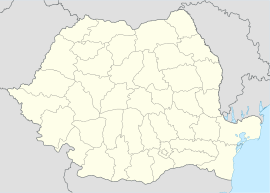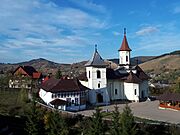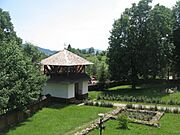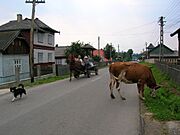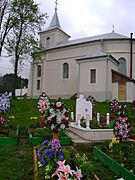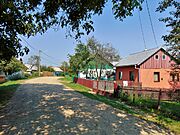Mănăstirea Humorului facts for kids
Quick facts for kids
Mănăstirea Humorului
|
||
|---|---|---|
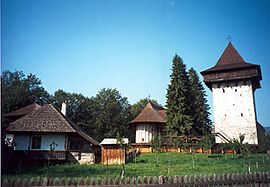
Humor Monastery and its medieval fortified watchtower
|
||
|
||
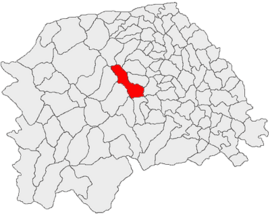
Location in Suceava County
|
||
| Country | ||
| County | Suceava | |
| Area | 96.28 km2 (37.17 sq mi) | |
| Elevation | 538 m (1,765 ft) | |
| Population
(2011)
|
Lua error in Module:Wd at line 1,575: attempt to index field 'wikibase' (a nil value). | |
| Time zone | EET/EEST (UTC+2/+3) | |
| Postal code |
727355
|
|
| Area code | +40 230 | |
Mănăstirea Humorului is a small town, or "commune," found in the northeastern part of Romania. It's in a historical area called Bukovina, within Suceava County. The name Mănăstirea Humorului means "Humor Monastery" in German (Humora Kloster). This commune is made up of three villages: Mănăstirea Humorului, Pleșa, and Poiana Micului. A very old and famous building, the Humor Monastery, built in the 16th century, is right here.
Contents
Geography and Location
This commune is located in a hilly area. It sits at an altitude of about 538 meters (1,765 feet) above sea level. The Humor River flows through the area. This river is a branch of the larger Moldova River.
Mănăstirea Humorului is in the central part of Suceava County. It is about 6 kilometers (3.7 miles) north of the town of Gura Humorului. The county capital, Suceava, is about 43 kilometers (27 miles) to the west.
Population and People
Who Lives Here?
According to the 2021 census, Mănăstirea Humorului had a population of 3,072 people. Most of the people living here, about 77%, are Romanians. Around 13.5% of the population are Poles.
In the 2011 census, there were 3,233 people. At that time, about 79% were Romanians, 19.6% were Poles, and 1% were Germans. These Germans were mainly Bukovina Germans.
History of Different Groups
In the village of Poiana Micului, some Slovaks came to live there between 1841 and 1842. Later, some of these Slovak families moved to other parts of Bukovina.
Over time, the number of Polish speakers in Poiana Micului changed. In 1890, about 51% of the villagers spoke Polish. By 1930, about 45% of the people were ethnic Poles.
A Slovak Catholic priest arrived in 1936 and started preaching in Slovak. This led some villagers to identify as Slovak, while others still felt they were Polish. This shows how different cultures lived side-by-side in the area.
Pleșa Village
The village of Pleșa (which is called Plesza in Polish) was started by Polish people in 1836. In 1880, it had 222 residents, and 217 of them were Poles. After World War II, some Poles from Pleșa moved back to Złotnik, Poland. Today, almost all the people living in Pleșa are Poles.
Gallery
See also
 In Spanish: Mănăstirea Humorului para niños
In Spanish: Mănăstirea Humorului para niños



